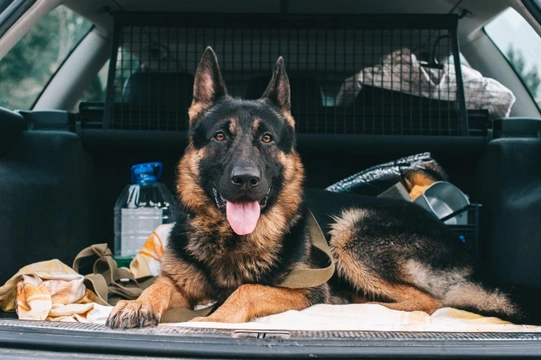
Five mistakes to avoid when you take your dog out in the car
For most of the UK’s dogs, going out in the car is a fact of life and for many dogs, is an everyday occurrence. Even dog owners without cars will still need to get their dog into a car now and then, for vet visits and other essentials if nothing else.
Most dogs take all of this in their stride, having gotten used to being in the car while they were still young, and so unless your dog is anxious about car trips or doesn’t settle down when in transit, it is something that we generally don’t pay a lot of mind to.
This means in turn that it is easy to get a little slack about safety and security when it comes to your dog and car trips, which can lead to potentially dangerous situations arising very quickly.
All responsible dog owners know that it is unsafe to leave a dog alone in a hot car – and this is perhaps the most acute potential hazard for dogs, which still sadly claims several canine lives every single year. However, there are also a range of other mistakes that many dog owners make when it comes to dogs and car trips, and many of them are simply mundane, everyday occurrences that you may have been doing for years without a problem – but that are still better avoided!
In this article, we will look at five common mistakes that dog owners make when taking their dogs out in the car – and how to avoid them. Read on to learn more.
Not restraining your dog
Most dogs that are acclimatised to car travel get to know the routine that accompanies going out in the car, including where they should sit and get settled down. However, even if your dog is well behaved and will not try to move around when in the car, they should still be secured and restrained.
This is in order to ensure the safety of both the dog itself, if you should have to break suddenly or if an accident occurs – and also because a loose dog might move around, distract the driver, and obscure the mirrors and viewpoints that the driver needs to navigate safely.
Always secure your dog in the car with an appropriate canine seatbelt, crate, or other safe, secure device designed for the purpose.
Only taking your dog on long journeys
If your dog travels in the car regularly, they are likely to take the whole thing in their stride and often, be quite keen to go out in the car because they will get to join in with the family and may go somewhere new or interesting.
However, if you only take your dog in the car when it is absolutely necessary, such as for visits to the vet or long trips away on holiday, your dog may be more reluctant, and more likely to take a while to settle down, as well as being more likely to get travel sick.
If you use your car regularly, try to take your dog out in it at least once a week so that longer journeys become no big deal for your dog.
Letting your dog put their head out of the window
Dogs are always keen to get close to a window and smell the world flying by, and this can both help to stave off travel sickness and keep your dog entertained during the trip. However, you should never allow your dog to put their head out of the window, because doing so comes with a number of hazards.
First of all, if you drive past another vehicle in close quarters or are driving on a narrow road, your dog might become injured – and it is also surprisingly common for dogs to get their heads stuck in open car windows and panic when underway!
Allow your dog to get no more than the tip of their nose out of the window, and if your dog can push the window down, use a lattice or mesh to keep them from being able to do so.
Putting your dog in the back of a truck
In countries like America and Australia, it is common practice to allow dogs to sit in an open truck bed outside for journeys – but this is actually really dangerous. Your dog will have no protection from the elements, may be able to jump out of the truck, and will be thrown around if you brake suddenly, and many other things besides.
Even if the back of your truck or van is enclosed, it is a good idea to keep your dog somewhere that you can see them in the mirrors, and away from tools or equipment that may move or tip in transit and be dangerous for your dog.
Not paying attention to your dog’s comfort
Nobody wants to be uncomfortable on a car trip, and your dog is no different. Where they sit or lie should be safe, secure and provide a means of restraint, but it should also be comfortable – your dog should be able to sit up and not be cramped. This means that a large dog like a German shepherd may need a different seat and form of restraint than a smaller dog like a Corgi.
Also, you should factor in regular breaks on long journeys to offer water, let your dog stretch their legs, and do their business – and ensure that your dog doesn’t get fretful on the way.



